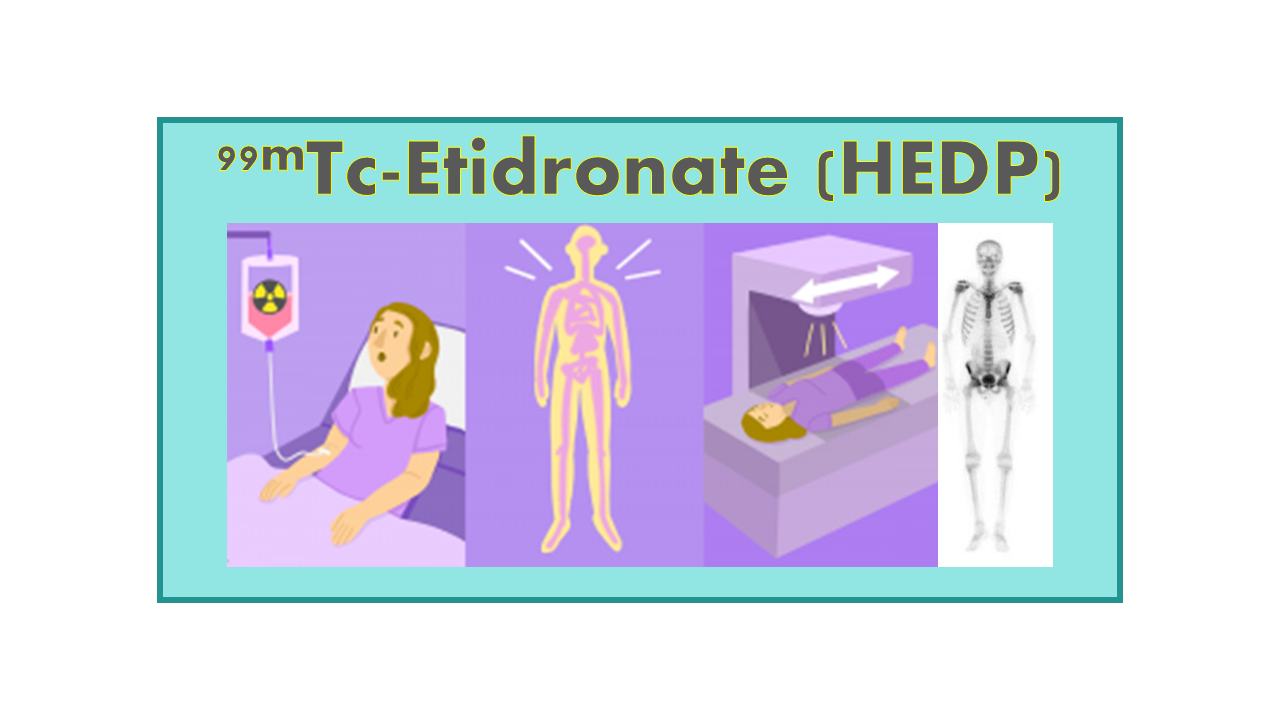
99mTc-Etidronate (HEDP)
April 5, 2024
Technetium-99m (99mTc) is a widely used radioisotope in nuclear medicine due to its favorable physical properties, such as its short half-life of 6 hours and its ability to emit gamma rays suitable for imaging. Etidronate, also known as hydroxyethylidene diphosphonate (HEDP), is a bisphosphonate drug that has a high affinity for bone tissue. When labeled with 99mTc, it can be used as a radiopharmaceutical for bone imaging.
99mTc-Etidronate (HEDP) is commonly used in bone scintigraphy to assess various bone conditions, including metastatic bone disease, osteomyelitis, and bone fractures. The radiopharmaceutical is administered intravenously, and it accumulates in areas of increased bone turnover or bone remodeling.
The gamma rays emitted by 99mTc can be detected by a gamma camera, allowing for the visualization of bone abnormalities. Areas with increased uptake of 99mTc-Etidronate indicate areas of increased bone metabolism, which can help in the diagnosis and monitoring of bone diseases.
Overall, 99mTc-Etidronate (HEDP) bone scintigraphy is a valuable imaging modality in nuclear medicine for evaluating bone pathologies and guiding treatment decisions.
Description
99mTc-Etidronate (99mTc-HEDP, 99mTc-Hydroxyethanediphosphonate, EHDP) is a generic SPECT agent for bone scintigraphy.
Clinical applications
99mTc-HEDP like all phosphonate derivatives has a high affinity for hydroxyapatite crystals which form the inorganic structure of the bone tissue. 99mTc-HEDP is therefore, indicated for the bone metastases detection, the imaging of altered bone metabolism in primary bone tumors, the imaging of bone inflammation, bone post-traumatic lesions, rheumatoid lesions or aseptic necrosis as well as the examination of the repair process in damaged bone tissue. Doses per patient are in the range 10 to 20 mCi.
Availability
99mTc-HEDP is available from Izotop (Phosphon in vivo kit, Tc-IK-1). GE Healthcare (Cintichem Technetium-99m HEDSPA or MPI Stannous Diphosphonate) and Mallinckrodt (Osteoscan) discontinued this product in the US respectively in 2003 and 2002.
Competition
There are several marketed agents useful for bone scintigraphy in both SPECT (99mTc- DPD, 99mTc-HDP, 99mTc-MPD) and PET modalities (18F-NaF). All of them are generics. Their use is dependent upon local availability and authorizations, as well as price, but it seems that the most commonly used agent is 99mTc-MDP and the highest quality of images is obtained with the PET tracer 18F-NaF, which is also the most expensive.
Comments
New radiopharmaceuticals for therapy in bone metastasized cancers such as 188Re-HEDP or 177Lu-HEDP, or even 223Ra-Chloride, show a beta emission that provides a signal sufficient for imaging and in certain cases could be substituted for the 99mTc-derivatives in the future.